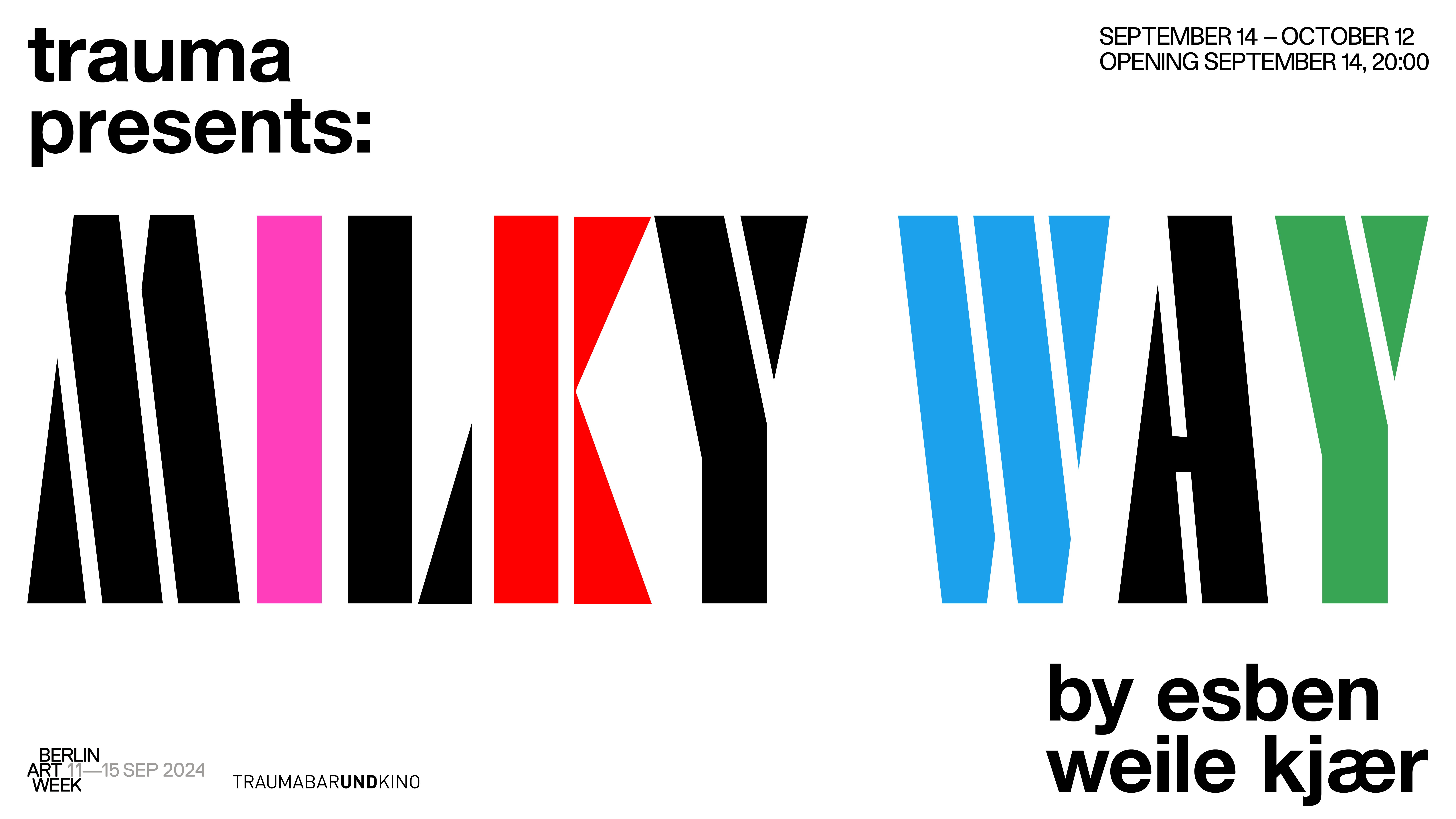
TRAUMA is pleased to present Milky Way, a solo exhibition by Danish artist Esben Weile Kjær. Kjær’s multidisciplinary work across sculpture and performance clashes the visual vocabularies of entertainment, fashion, and contemporary art in a critical investigation of youth-cultural rituals past and present.
In TRAUMA’s central theatre space, Kjær has erected a large, navigable concrete structure that recalls two iconic, if melancholic, architectural typologies from the recent past: Soviet playgrounds and the quintessential WW2 bunkers along the West European coastline (known officially as the Atlantic Wall). The severe brutalist design of the artist’s construction is contrasted by a child-like playfulness, inviting audiences to climb the structure via its stairs or to try its built-in slide. The bunker’s exterior is embellished by several neon works on the building’s exterior and several stained-glass windows. While the neon works display fluorescent plants with diamond-crusted flowers crawling up the building’s exterior, the windows’ illuminated motifs are inspired by NASA imagery of new galaxies forming in the Milky Way. In this clash of spatial and visual iconographies, Kjær explores the status of bygone utopian visions under the sign of the perpetual new: how dreams are made material as aesthetics, how they inevitably fade, and how they might reawaken and remind us (of something) anew.
Can play be a mnemonic device, a memory tool? Kjær’s work asks the difficult question of how social rituals are historicized, forgotten, or reduced to a mere image. Kjær’s benign use of cultural typologies is nonetheless haunted by history: Europe’s Atlantic Wall was erected in the 1940s by Germany along the occupied Western Danish coastline in preparation for an epic battle that, in the end, took place elsewhere. But Kjær insists that as these relics of war have remained firmly embedded in the natural landscape, they have become available for radical practical and ideological reinterpretation in the most quotidian fashion. As a child, the artist experienced these bunkers as decontextualized and highly mysterious structures, inviting exploration and play and serving as backdrops for countless adolescent adventures. This symbolic recoding of architectural and natural environments, of course, is not uncommon: Berlin’s own history of transforming abandoned structures into community hubs (parks, squads, clubs) is a testament to the radical re-tooling of physical spaces and their sociopolitical signification. In nightclubs—a long-standing object of research for the artist—spatial repurposing invites direct experimentation with social norms and often reimagines the definition of public space. And yet history always looms in these materials, Kjær’s work suggests; they are haunted relics suspended between disparate times and purposes.
Kjær builds ghostly environments by layering disparate but deeply familiar aesthetic tropes. Milky Way’s stained-glass windows are inspired not only by medieval churches but also by strip clubs, casinos, and absinthe bars of 1920s Paris, a heterogeneous set of spaces that Walter Benjamin once categorized as “dream houses.” Together, these unlikely spaces of pleasure and devotion share liminal atmospheres of social exchange and performance. The benevolent neon flowers climbing the building’s facade emphasize themes of growth and resurgence—hackneyed tropes that are used as popularly in spaces of consumption and entertainment as in art. Kjær’s symbols drift outward and away from stable semantic orders, ambivalently mutating towards new decorative and economic ends. Art and architecture can capture and redirect but not fixate it; they, too, are a part of an eternal of symbolic drift in a society of matter and media in flux.
Milky Way extends TRAUMA’s curatorial mission to create alternatives to traditional club and gallery culture in Berlin, forefronting the critical possibilities of hybrid sensory playgrounds of various kinds. Kjær’s exhibition is a precursor to “Solar System,” a large-scale solo exhibition planned at Kunstnen Museum of Art in Aalborg, Denmark, later this year.
OPENING: September 14, 20:00
Curated by Madalina Stanescu
Text by Jeppe Ugelvig
Soundscape: Moritz Haas - Europa
Production director: Troels Primdahl, Matei Cioata
Architectural design: Matei Cioata
Art handling: Erik Felfalusi
Production assistance: Leo Maribo
Neon montage: Sebastian Gündel
Graphics promotion: William Becker
Music supervision: Kyle Van Horn, Leonardo Liccini
The show is part of Berlin Art Week 2024 Featured Section